Thermal Study on Extensive Green Roof Integrated Irrigation in Northwestern Arid Regions of China
Abstract
:1. Introduction
- What is the best model to simulate green roofs in arid climates?
- What plant species have the greatest impact on the temperature inside the buildings during long-term drought?
- How can integrated irrigation systems be designed for drought resistance?
- How can the thermal characteristics of green roofs be assessed under drought and strong light area conditions?
- How can thermal changes be assessed after irrigation?
2. Methods
2.1. Study Site
2.2. Selection of Plant Species
- a
- Sedum lineare has a dense root system and is a rapidly growing species. It propagates easily and is drought-tolerant. Previous research has shown Sedum spp. reliability and dependability to be of crucial importance in green roof implementation [18].
- b
- Aptenia cordifolia is a succulent with bright green leaves and red flowers. It is very efficient in heavy metal uptake for sewage sludge compost recuperation. Earlier studies reveal that it is capable of surviving drought conditions [19].
- c
- Tifdwarf bermuda grass has been one of the most popular choices for putting greens for over 40 years [20].
2.3. Construction of Reduced-Scale Building Models
2.4. Establishment of Irrigation System
2.5. Set-up of Monitoring Instrument
2.6. Statistical Analysis
3. Results and Discussion
3.1. Drought Tolerance
3.2. Comparison of the Effect of Green Roofs on Temperature
3.3. Statistical Test and Variance Analysis
3.4. Infrared Thermal Imaging of Plants and Analysis
4. Conclusions
Acknowledgments
Author Contributions
Conflicts of Interest
References
- Walsh, C.J.; Fletcher, T.D.; Ladson, A.R. Stream restoration in urban catchments through redesigning stormwater systems: looking to the catchment to save the stream. J. N. Am. Benthol. Soc. 2005, 24, 690–705. [Google Scholar] [CrossRef]
- Wang, G.; Cheng, G. The characteristics of water resources and the changes of the hydrological process and environment in the arid zone of northwest China. Environ. Geol. 2000, 39, 783–790. [Google Scholar] [CrossRef]
- Wang, Y.; Chang, Y. Drinking water technology of rural housing rainwater treatment at arid regions of northwest China. Chin. J. Environ. Eng. 2014, 8, 1021–1024. [Google Scholar]
- Xiao, G.; Wang, J. Research on progress of rainwater harvesting agriculture on the Loess Plateau of China. Acta Ecol. Sin. 2003, 23, 1003–1011. [Google Scholar]
- Payne, E.G.I.; Hatt, B.E.; Deletic, A. Adoption Guidelines for Stormwater Biofiltration Systems; Cooperative Research Centre for Water Sensitive Cities: Melbourne, Australia, 2015. [Google Scholar]
- Jim, C.Y. Building thermal-insulation effect on ambient and indoor thermal performance of green roofs. Ecol. Eng. 2014, 69, 265–275. [Google Scholar] [CrossRef]
- Teemusk, A.; Ülo, M. Temperature regime of planted roofs compared with conventional roofing systems. Ecol. Eng. 2010, 36, 91–95. [Google Scholar] [CrossRef]
- Niachou, A.; Papakonstantinou, K.; Santamouris, M.; Tsangrassoulis, A.; Mihalakakou, G. Analysis of the green roof thermal properties and investigation of its energy performance. Energy Build. 2001, 33, 719–729. [Google Scholar] [CrossRef]
- Mellor, R.S.; Salisbury, F.B.; Raschke, K. Leaf temperatures in controlled environment. Planta 1964, 61, 56–72. [Google Scholar] [CrossRef]
- Costanzo, V.; Evola, G.; Marletta, L. Energy savings in buildings or UHI mitigation? Comparison between green roofs and cool roofs. Energy Build. 2016, 114, 247–255. [Google Scholar] [CrossRef]
- Sailor, D.J. A green roof model for building energy simulation programs. Energy Build. 2008, 40, 1466–1478. [Google Scholar] [CrossRef]
- Pianella, A.; Lu, A.; Chen, Z.; Williams, N. Substrate Depth, Vegetation and Irrigation Affect Green Roof Thermal Performance in a Mediterranean Type Climate. Sustainability 2017, 9, 1451–1470. [Google Scholar] [CrossRef]
- Ascione, F.; Bianco, N.; Rossi, F.D.; Turni, G.; Vanoli, G.P. Green roofs in European climates. Are effective solutions for the energy savings in air-conditioning? Appl. Energy 2013, 104, 845–859. [Google Scholar] [CrossRef]
- Attivissimo, F.; Di Nisio, A.; Carducci, C.G.; Spadavecchia, M. Fast Thermal Characterization of Thermoelectric Modules Using Infrared Camera. IEEE Trans. Instrum. Meas. 2017, 66, 305–314. [Google Scholar] [CrossRef]
- Santamouris, M.; Pavlou, C.; Doukas, P.; Mihalakakou, G.; Synnefa, A.; Hatzibiros, A.; Patargias, P. Investigating and analysing the energy and environmental performance of an experimental green roof system installed in a nursery school building in Athens, Greece. Energy 2007, 32, 1781–1788. [Google Scholar] [CrossRef]
- Monteiro, C.M.; Calheiros, C.S.; Martins, J.P.; Costa, F.M.; Palha, P.; De Freitas, S.; Ramos, N.M.; Castro, P.M. Substrate influence on aromatic plant growth in extensive green roofs in a Mediterranean climate. Urban Ecosyst. 2017, 1–11. [Google Scholar] [CrossRef]
- Berardi, U.; Ghaffarianhoseini, A.H.; Ghaffarian Hoseini, A. State-of-the-art analysis of the environmental benefits of green roofs. Appl. Energy 2014, 115, 411–428. [Google Scholar] [CrossRef]
- Lu, J.; Yuan, J.G.; Yang, J.Z.; Chen, A.K.; Yang, Z.Y. Effect of substrate depth on initial growth and drought tolerance of sedum lineare, in extensive green roof system. Ecol. Eng. 2015, 74, 408–414. [Google Scholar] [CrossRef]
- Fleta-Soriano, E.; Pinto-Marijuan, M.; Munne-Bosch, S. Evidence of Drought Stress Memory in the Facultative CAM, Aptenia cordifolia: Possible Role of Phytohormones. PLoS ONE 2015, 10, 1–12. [Google Scholar] [CrossRef] [PubMed]
- Nektarios, P.A.; Ntoulas, N.; Nydrioti, E. Turfgrass use on intensive and extensive green roofs. Acta Hortic. 2012, 938, 121–128. [Google Scholar] [CrossRef]
- Yan, F.X. Analysis and research of utilization status and existing problems of Lanzhou city water resources. Gansu Water Resour. Hydropower Technol. 2012, 48, 11–13. [Google Scholar]
- Ministry of Housing and Urban-Rural Development of the People’s Republic of China. Technical Specification for Green Roof; China Architecture & Building Press: Beijing, China, 2005. (In Chinese)
- Watkins, R.; Palmer, J.; Kolokotroni, M. Increased temperature and intensification of the urban heat island: implications for human comfort and urban design. Built Environ. 2007, 33, 85–96. [Google Scholar] [CrossRef]
- Getter, K.L.; Rowe, D.B.; Andresen, J.A.; Wichman, I.S. Seasonal heat flux properties of an extensive green roof in a Midwestern US climate. Energy Build. 2011, 43, 3548–3557. [Google Scholar] [CrossRef]
- Qin, X.; Wu, X.; Chiew, Y.M.; Li, Y. A green roof test bed for stormwater management and reduction of urban heat island effect in Singapore. Br. J. Environ. Clim. Chang. 2012, 2, 410–420. [Google Scholar] [CrossRef] [PubMed]
- Beerling, D.J.; Chaloner, W.G. The Impact of Atmospheric CO2 and Temperature Changes on Stomatal Density: Observation from Quercus robur Lammas Leaves. Ann. Bot. 1993, 71, 231–235. [Google Scholar] [CrossRef]
- Brewer, C.A.; Smith, W.K. Leaf surface wetness and gas exchange in the pond lily nuphar polysepalum (nymphaeaceae). Am. J. Bot. 1995, 82, 1271–1277. [Google Scholar] [CrossRef]
- Wolf, D.; Lundholm, J. Water uptake in green roof microcosms: effects of plant species and water availability. Ecol. Eng. 2008, 33, 179–186. [Google Scholar] [CrossRef]
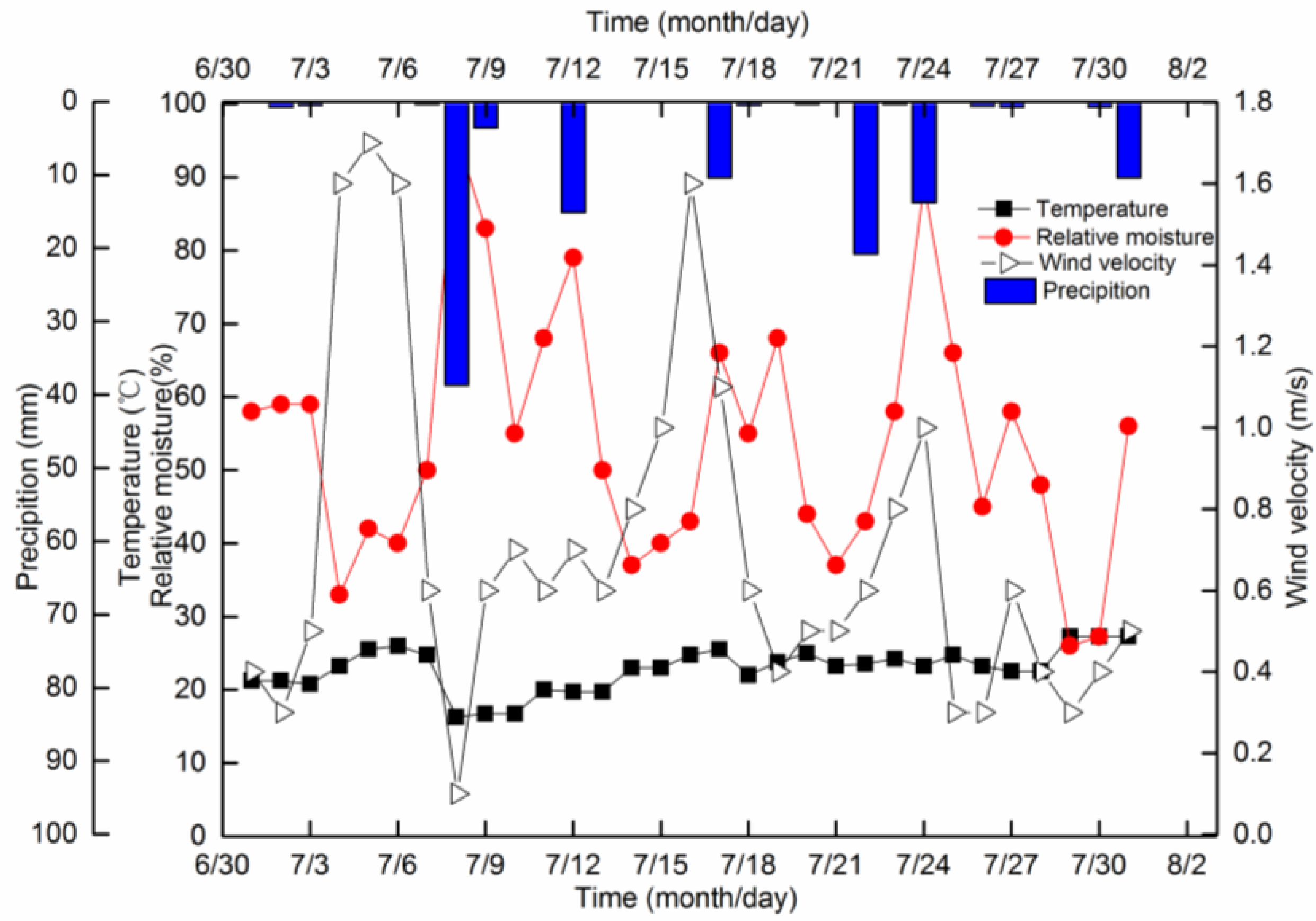
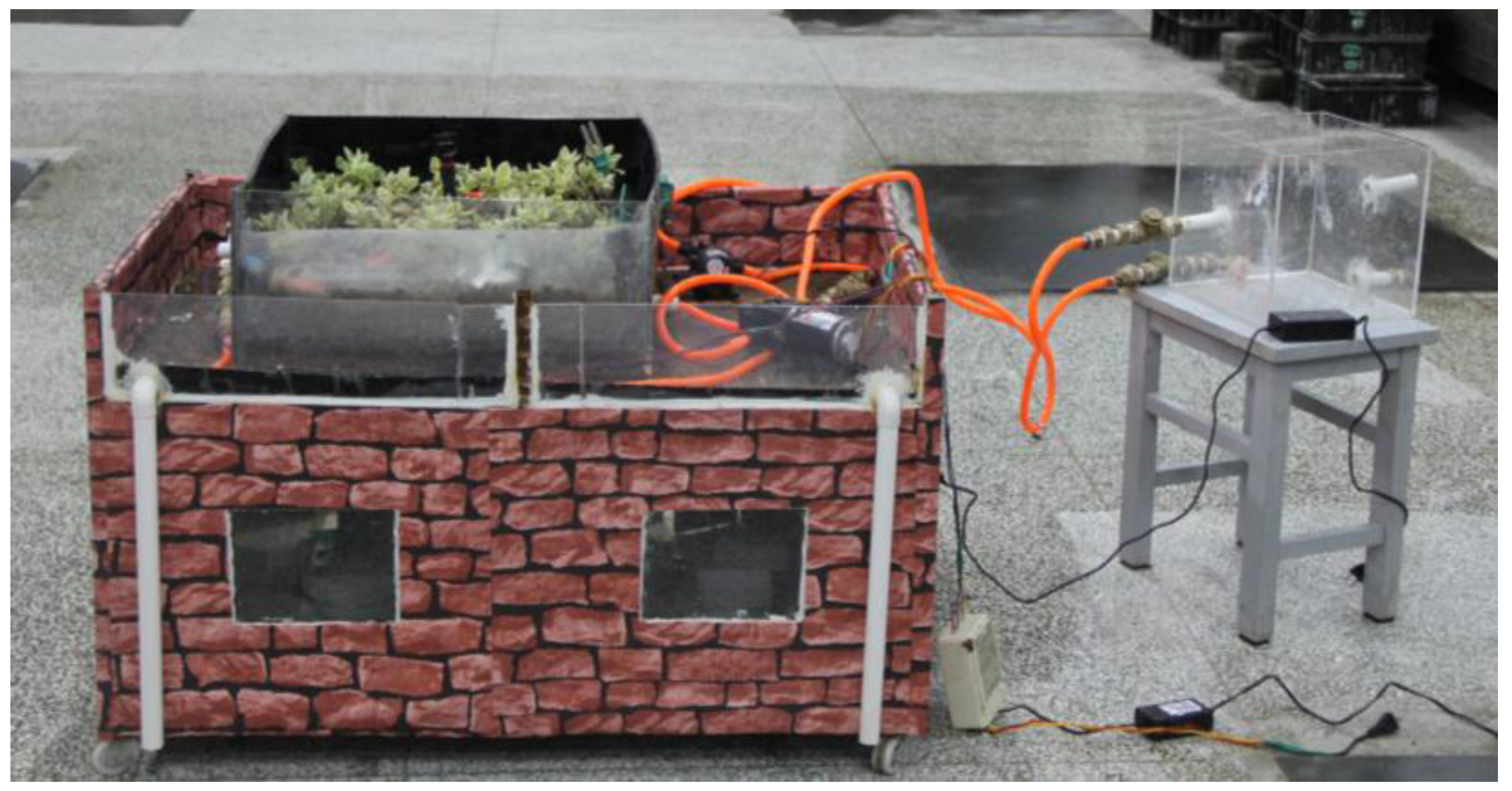
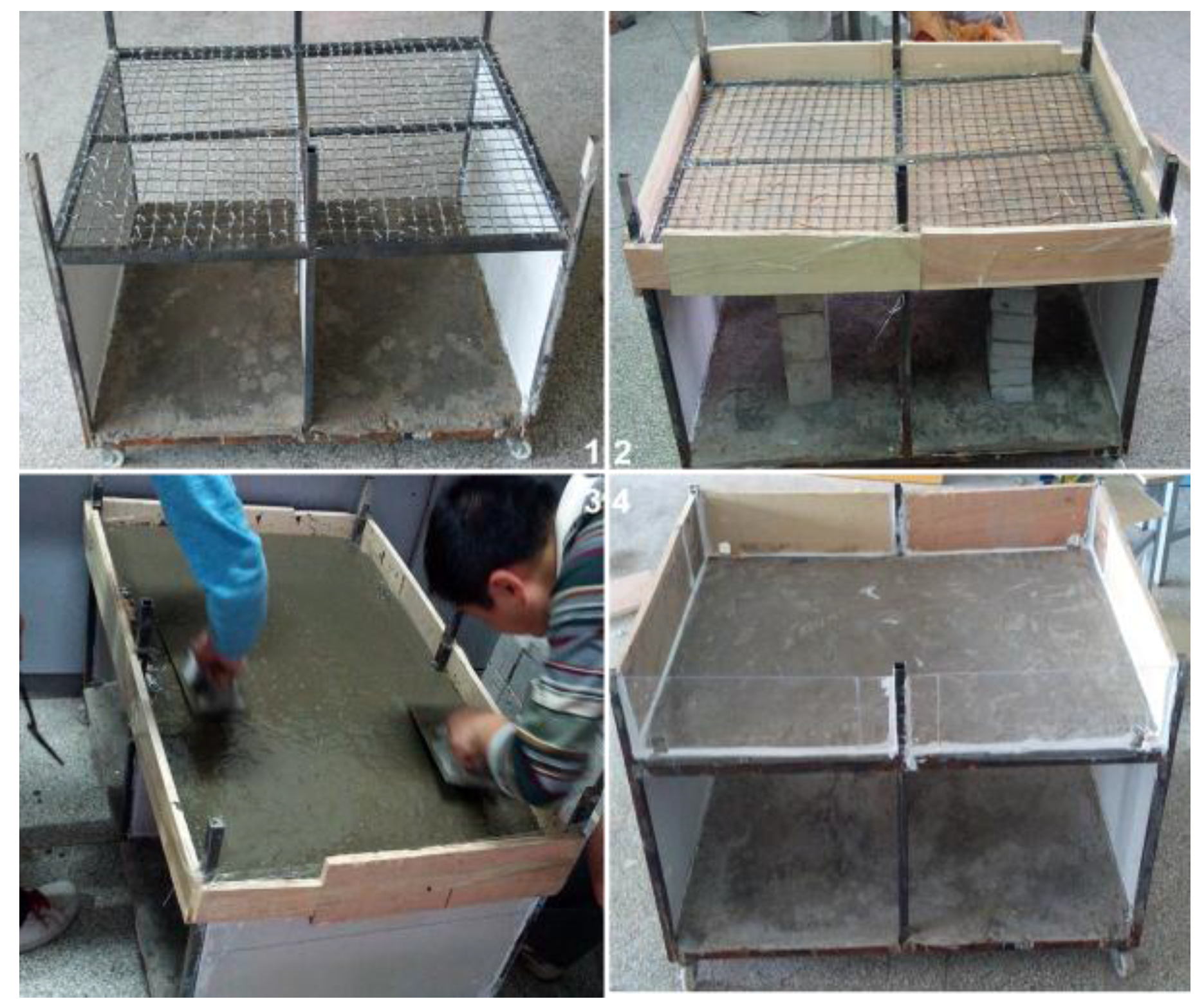
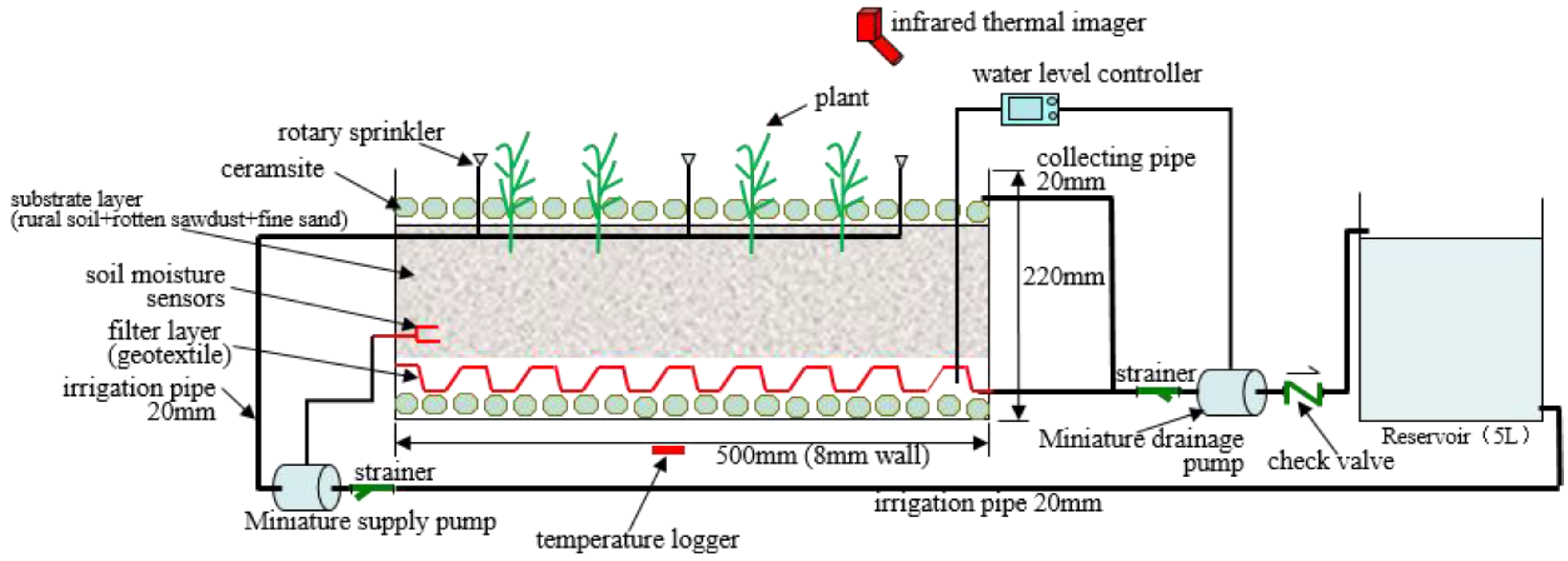
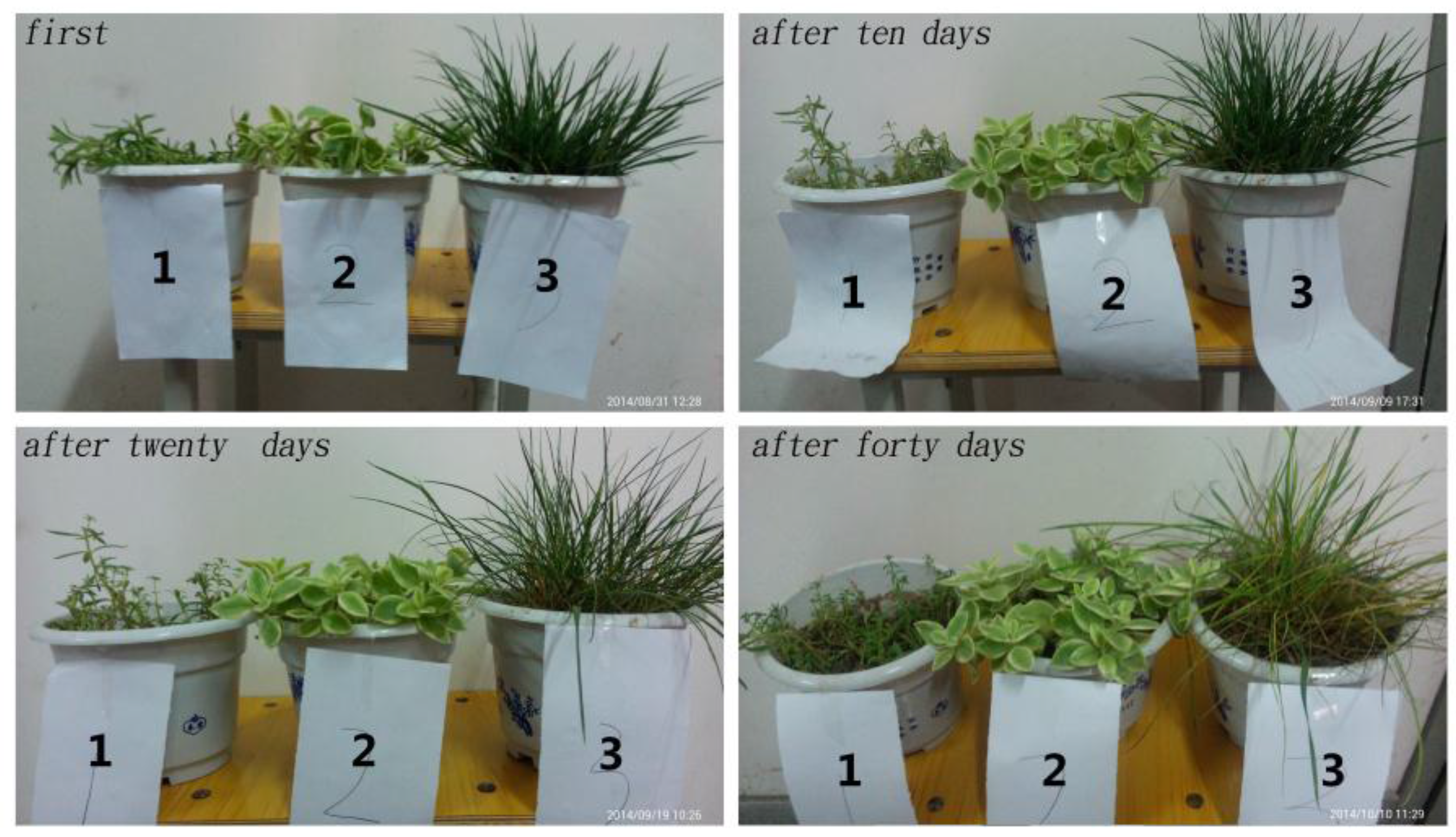

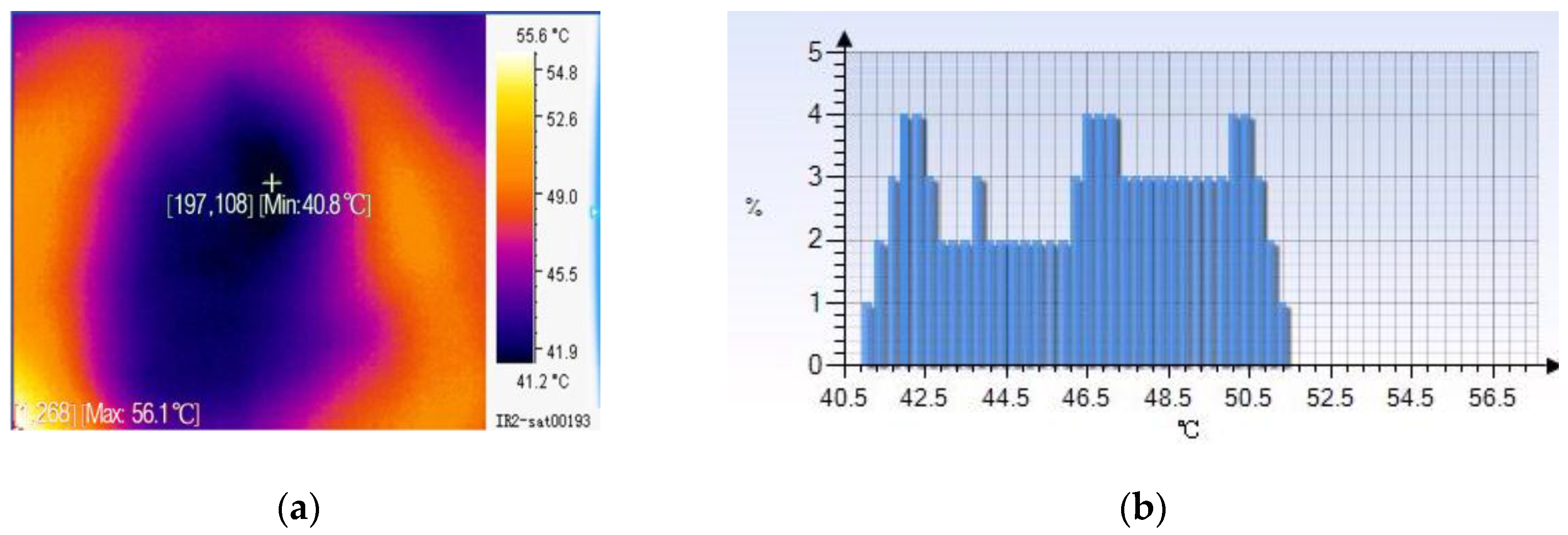
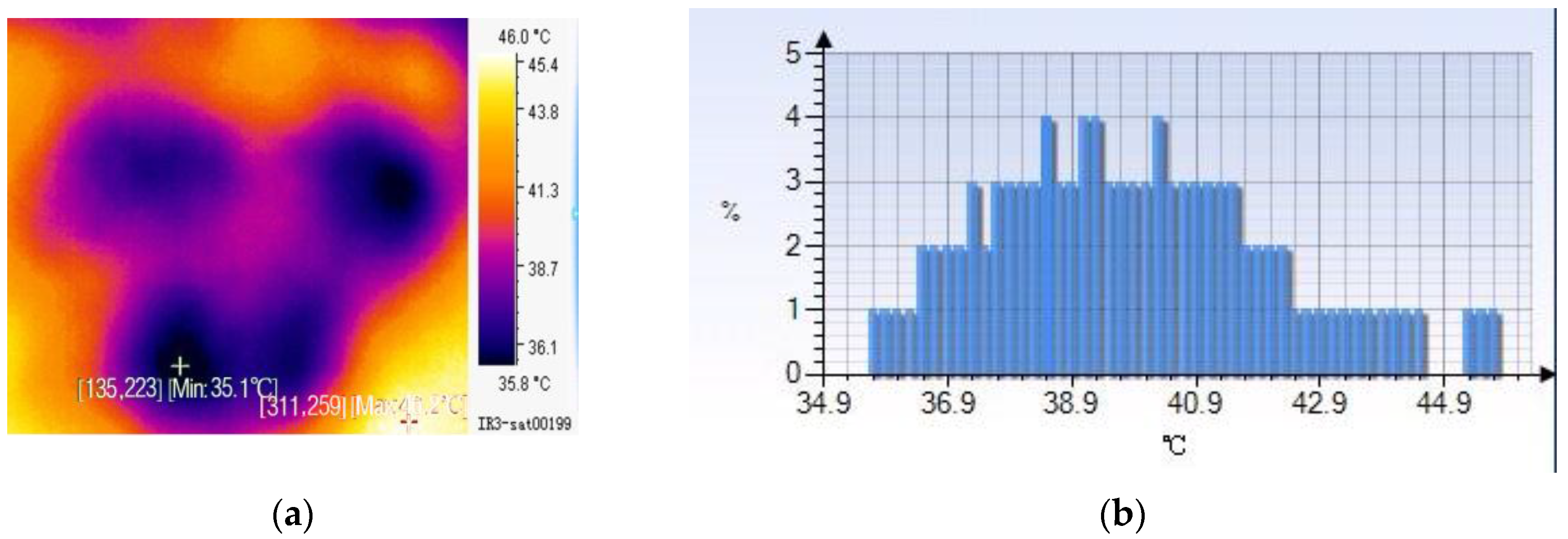


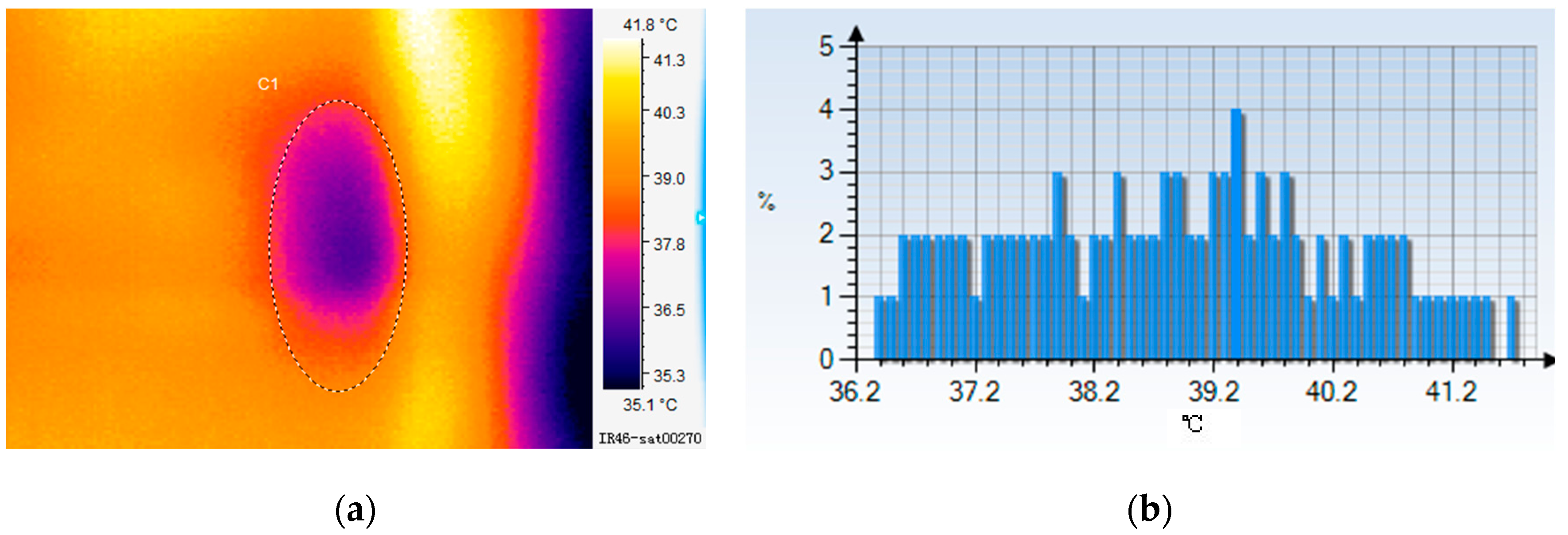
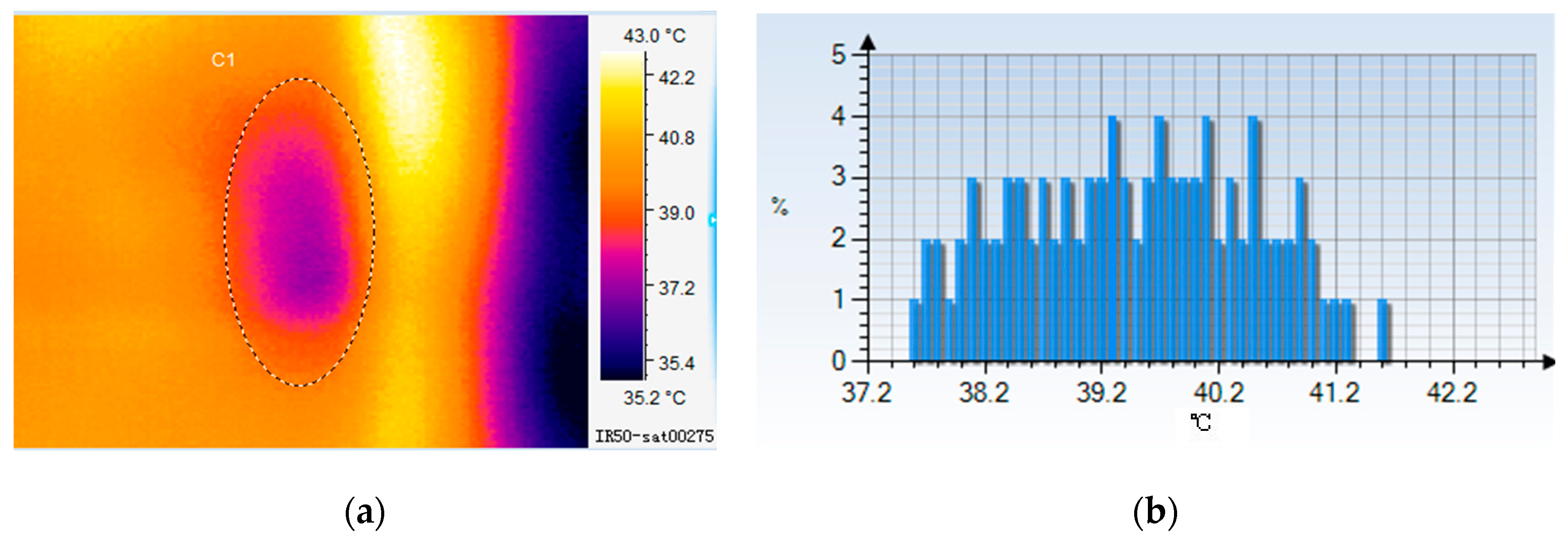
| Temperature Interval (°C) | Outside Temperature | Internal Temperature Frequency with Green Roof | Internal Temperature Frequency without Green Roof | |||
|---|---|---|---|---|---|---|
| Number | Frequency (%) | Number | Frequency (%) | Number | Frequency (%) | |
| 33~34.9 | 50 | 5 | 30 | 3 | 23 | 2.3 |
| 35~36.9 | 45 | 4.5 | 34 | 3.4 | 18 | 1.8 |
| 37~38.9 | 23 | 2.3 | 10 | 1.0 | 11 | 1.1 |
| 39~40.9 | 10 | 1 | 7 | 0.7 | 12 | 1.2 |
| 41~42.9 | 1 | 0.1 | 1 | 0.1 | 7 | 0.7 |
| 43~44.9 | 1 | 0.1 | 0 | 0 | 11 | 1.1 |
| 45~46.9 | 0 | 0 | 0 | 0 | 15 | 1.5 |
| 47~48.9 | 0 | 0 | 0 | 0 | 9 | 0.9 |
| 49~50.9 | 0 | 0 | 0 | 0 | 12 | 1.2 |
| 51~52.9 | 0 | 0 | 0 | 0 | 26 | 2.6 |
| 53~54.9 | 0 | 0 | 0 | 0 | 21 | 2.1 |
| 55~56.9 | 0 | 0 | 0 | 0 | 15 | 1.5 |
| 57~58.9 | 0 | 0 | 0 | 0 | 4 | 0.4 |
| ∑ | 130 | 13 | 82 | 8.2 | 158 | 15.8 |
| <33 °C | 870 | 87 | 918 | 91.8 | 842 | 84.2 |
| ≥35 °C | 80 | 8 | 52 | 5.2 | 135 | 13.5 |
| Name | Outside Temperature (A) | Internal Temperature Frequency with Green Roof (B) | Internal Temperature Frequency without Green Roof (C) |
|---|---|---|---|
| Test Number | Test Number | Test Number | |
| Average value | 10 | 6.307692 | 14.15385 |
| Standard deviation Sx | 17.92577 | 11.863 | 6.401122 |
| Sample number n | 13 | 13 | 13 |
| Minimum value xmin | 0 | 0 | 4 |
| Maximum value xmax | 50 | 34 | 26 |
| Range xmin~xmax | 0~50 | 0~34 | 4~26 |
| Confidence interval half width d | 0.000714 | 0.000714 | 0.000714 |
| Double tail pair comparison t test | 0.386006 (A and C) | 0.036636 (A and B) | 0.026228 (B and C) |
| Summary | ||||||
| Group | Observation number | Summation | Average | Variance | ||
| A | 13 | 130 | 10 | 321.3333 | ||
| B | 13 | 82 | 6.307692 | 140.7308 | ||
| C | 13 | 184 | 14.15385 | 40.97436 | ||
| Variance Analysis | ||||||
| Source of variance | SS | df | MS | F | P-value | F crit |
| Inter-group | 400.6154 | 2 | 200.3077 | 1.194587 | 0.314548 | 3.259446 |
| Intra-group | 6036.462 | 36 | 167.6795 | |||
| Total | 6437.077 | 38 | ||||
© 2017 by the authors. Licensee MDPI, Basel, Switzerland. This article is an open access article distributed under the terms and conditions of the Creative Commons Attribution (CC BY) license (http://creativecommons.org/licenses/by/4.0/).
Share and Cite
Wang, Y.; Singh, R.P.; Fu, D.; Zhang, J.; Zhou, F. Thermal Study on Extensive Green Roof Integrated Irrigation in Northwestern Arid Regions of China. Water 2017, 9, 810. https://doi.org/10.3390/w9110810
Wang Y, Singh RP, Fu D, Zhang J, Zhou F. Thermal Study on Extensive Green Roof Integrated Irrigation in Northwestern Arid Regions of China. Water. 2017; 9(11):810. https://doi.org/10.3390/w9110810
Chicago/Turabian StyleWang, Yajun, Rajendra Prasad Singh, Dafang Fu, Junyu Zhang, and Fang Zhou. 2017. "Thermal Study on Extensive Green Roof Integrated Irrigation in Northwestern Arid Regions of China" Water 9, no. 11: 810. https://doi.org/10.3390/w9110810




